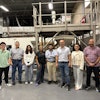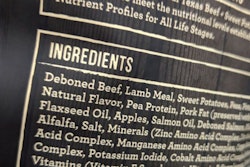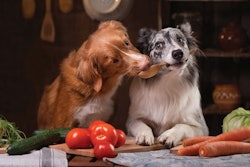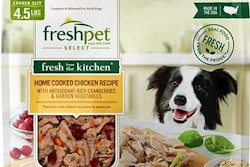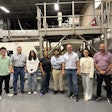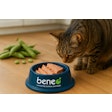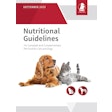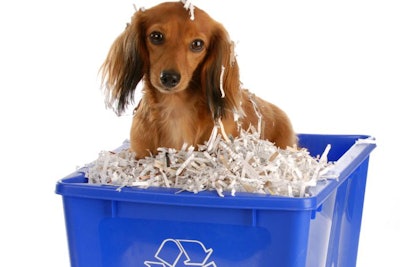
Most pet food packaging ends up in landfills, even the recyclable or return-to-store types. While recycling is familiar and popular, flexible materials used for recyclable pet food bags often are not collected by curbside pick-up. Although pet food bags may be technically recyclable, the quantity that actually makes it back into the resource stream may be small, Nina Wang, marketing specialist for the Layfield Group said from her booth at Petfood Forum 2022. The easiest thing for a pet owner to do is thrown their bag away. Instead of trying to change pet owners’ behaviors, taking the path of least resistance means finding a way to make it OK to pitch the bag. For several years with its BioFlex material, Layfield has made pet food packages that biodegrade into fuel for power generation. These bags from dog and cat food brands, such as Annamaet, can be thrown into the regular garbage and will end up as electricity if they wind up in a biogas landfill.
“That's the great thing about it, you don't have to clean it, you don't have to sort it,” Wang said. “It's exactly in line with the consumer behavior. They're throwing it away anyway.”
Biogas energy from sustainable pet food packaging
Fossil fuels, such as natural gas, are literally fossils. The combustible energy they contain was trapped inside dead plants and other organisms many millions of years ago. Today’s modern, on-the-go biodegradable waste can skip the eons and go directly into energy production through landfill gas recovery systems, according to the U.S. Energy Information Administration. Biogas results from the decomposition of biomass in a landfill, which can include everything from lawn clippings and left-overs to road-killed raccoons. In a specifically constructed landfill, the gas from rotting organic material can be captured and burned much like its ancient relative, natural gas. Like gas from the ground, biogas mostly contains methane, along with carbon dioxide, both greenhouse gases if they escape into the atmosphere. However, when trapped in a properly constructed landfill, burners can use that biogas to heat boilers that spin turbines to generate electricity.
For example, landfill biogas fuels 1,000 homes in the city of Kansas City where Petfood Forum was held, Wang said. If pet owners in the Kansas City area throw out a bag from Annamaet dog or cat food, that bag may end up as someone else’s electricity.
What’s more, Annamaet lets consumers know they use Layfield’s BioFlex material for pet food bags.
“They use it as a great marketing tool for themselves,” Wang said. “They're very conscious about the environment and the products and the imprint, the carbon input and the environmental footprint that they put on. So they actually use it on their website, they have the BioFlex logo on their bags. They have it in their literature. They use it as a great opportunity to promote their company and their brand as good environmental stewards.”

